December 2007
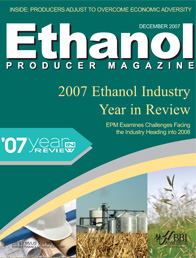 View Full Print Edition
View Full Print EditionBusiness Briefs
Columns

Changing Fortunes in Today's Market
By Bill Hanigan
Cloudy Mornings Often Turn to Sunny Afternoons
By Bob Dinneen
The Way I See It
By Mike Bryan
Another year in the books
By Craig A. Johnson
EERC Update
By Bruce Folkedahl
Editor's Note
By Tom Bryan
NBB In Sight
By Joe Jobe
Talking Point
By Jake Stewart
Featured
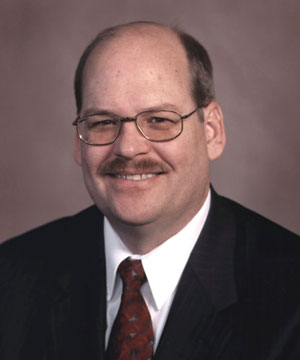
The Gift of Year-End Tax Planning
By Dave Burger
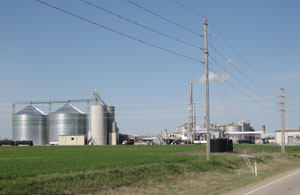
Cross-Section of a Tested Industry
By Jerry W. Kram and Ron Kotrba
EPM spoke with a sampling of U.S. ethanol producers to garner information on how economic adversity—higher corn and low ethanol prices—may have impacted business-as-usual at their plants over the past year. Trade secrets are tough to get out of companies though, and understandably so. After all, who wants to tell the competition the secrets to their success?

Strong Corn Prices Persist in '07
By Susanne Retka Schill
In 2007, corn growers proved they could keep up with a growing demand for their crop. The question now is will they step up to the plate again in 2008 or take advantage of higher wheat and soybean prices.
The Truth About Imports
By Nicholas Zeman
It may seem counterproductive for companies to import ethanol when the United States seemingly has an oversupply and the price is right. The relationship between ethanol producers and oil refiners can all be understood with greater insight when seen through the lens of fuel importers.

Competing in a Climate-Driven Economy
By Anduin Kirkbride McElroy
As the world moves toward a more climate-conscious society where carbon is rationed and traded, the ethanol industry must adapt or fall behind.
Clearly Canadian
By Khalila Sawyer
Husky Energy Ltd.'s roots are in Cody, Wyo., yet there is something distinctly Canadian about it––maybe because it was started by a Canadian. In 1938, rancher Glenn Neilson from Cardston, Alberta, convinced a farm supply cooperative and a Montana contractor to join him in purchasing two heavy oil refineries. That was only the beginning of a series of business moves that eventually made Husky one of Canada's largest energy companies.

2007: A Banner Year for Biofuels Funding
By Jessica Ebert
Administrative priorities, congressional legislation and internal priorities of individual agencies continue to escalate government funding for biofuels research and development. One agency in particular, the U.S. DOE, helped make this a banner year for monetary support to advance the biofuels industry, especially the cellulosic ethanol industry.

Elusive Equity
By Bryan Sims
Tight margins for ethanol producers in the latter half of 2007 forced project developers to take a more calculated approach to raising money. EPM talks with financial analysts to discover what trends can be expected heading into 2008.

Ethanol Experiences Growing Pains
By Michael Shirek
In 2007, market forces squeezed ethanol profit margins. Production records were set month after month without a similar spike in demand resulting in low prices. How far did ethanol prices fall, where will prices go in 2008 and what does that mean for the profitability of ethanol production?
Construction Pace Slows
By Craig A. Johnson
In December 2006, EPM reported 64 plants under construction representing 4.2 billion gallons of capacity. In June 2007, new construction peaked at 5.94 billion gallons and started to fall. New plants and expansions are still expected to be built in 2008 but at a more manageable pace.
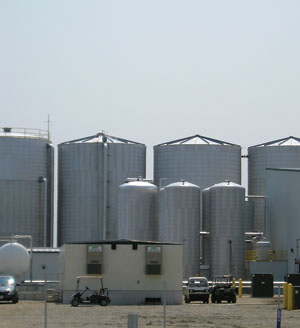
Is Consolidation Inevitable?
By Nicholas Zeman
Recent mergers and acquisitions activity in the ethanol industry have some wondering if consolidation is a trend that will continue into 2008.

Revolutionizing the Production Process
By Khalila Sawyer
In 2004, as a follow-up to the development of the pyrolysis process, University Professor Christian Roy and his student Richard Cranford began to explore the possibilities of creating a unique membrane for the purification of syngas. Their efforts evolved into Quebec-based Vaperma Inc. a company specializing in the development and commercialization of advanced gas solutions for the production of ethanol, biodiesel and natural gas. Now, with its innovative membrane technology in hand, Vaperma looks to revolutionize the biofuels industry.
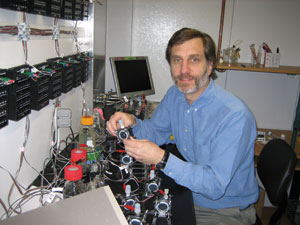
Fortifying Fuel Cell Technology
By Jessica Ebert
Scientists have known for nearly a century that certain bacteria can convert organic material into electricity. Only recently though, have microbiologists and engineers worked to exploit this phenomenon in the development of microbial fuel cells for powering environmental monitoring devices and treating wastewater.
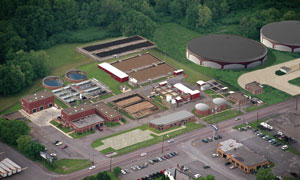
The Power of High-Strength H2O
By Ron Kotrba
The future of wastewater treatment is being designed in Pennsylvania, where the Milton Regional Sewer Authority's plant plans to upgrade its antiquated aerobic water treatment process. The technologies penciled into this design of tomorrow aren't new, but the designers are billing it as the world's first wastewater-to-energy project.

Taming the Wild Cuphea
By Susanne Retka Schill
Cuphea has been in development as an industrial crop for a number of years. Once the oilseed reaches commercial viability it could replace imported oils and petroleum as a source for capric and lauric acids used in the production of manufacturing surfactants, detergents, lubricants, personal care products and other specialty chemicals.
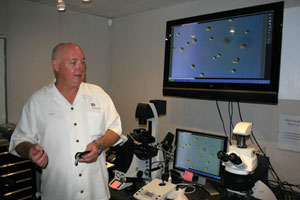
Biomass in a Tube
By Jerry W. Kram
Biomass will play an increasing role in filling the world's demand for energy and chemicals. Producing enough biomass will take land and lots of it. As Will Rogers said when advising people to buy land, "They ain't making more of the stuff." Harvesting more biomass per acre for food and fuel to feed and run a growing world population is the key, and microscopic algae may be a major player.

Adding Value to Wheat Straw
By Anduin Kirkbride McElroy
Wyoming-based Heartland BioComposites LLC makes composite fencing from wheat straw and recyclable plastic. Though the manufacturing facility is located in an arid region of the country biomass sourcing has been easy.
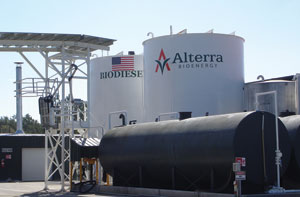
Divided We Fall
By Ron Kotrba
Those fighting for one renewable fuel may be wasting energy and creating a no-win situation. Representatives from all sides of the renewable diesel issue speak with Biodiesel Magazine about perceptions shaping the future coexistence of alternative diesel fuels.
The Bigger, the Better?
By Jessica Ebert
According to Biodiesel Magazine's plant construction list, 148 biodiesel plants are operating in the United States with an annual capacity of 1.75 billion gallons per year. The plants produce an average 11.8 MMgy. In contrast, the average size of the 28 plants under construction and three existing plants being expanded is 26 MMgy. As feedstock prices rise, will a trend toward bigger plants continue?

Feedstock Frenzy
By Susanne Retka Schill and Jerry W. Kram
Jatropha and algae show promise as alternative biodiesel feedstocks because they don't compete with crop acres and are purportedly high yielding. The "gold rush" mentality developing around them raises questions about when and if they will be ready for commercial production.

Industry Pins Hopes on Policy
By Anduin Kirkbride McElroy
In 2007, the biodiesel industry identified policy as the key to industry longevity. After months of lobbying and still no resolution from Congress on the Energy Bill and the Farm Bill, the industry will likely need to maintain its focus on policy.
Biodiesel: A Global Perspective
By Bryan Sims
In 2007, Europe and the United States were the leading biodiesel producers. Heading into 2008, Biodiesel Magazine takes a look at which countries are struggling and which show potential.
Research Reveals New Biofuels Link
By Anduin Kirkbride McElroy
Crude glycerin is a low-value byproduct of the growing biodiesel industry. But one company, Glycos Biotechnologies Inc., sees potential for the product as a feedstock for ethanol production.

Biofuels on the Hill
By Jessica Sobolik
U.S. Sen. Byron Dorgan, D-N.D., is part of a growing group in Congress that is interested in and excited about the potential benefits of renewable fuels in the United States. Here, he shares some of his ideas and plans with Biodiesel Magazine.
Contributions
Applying a Measurement Automation Strategy
By Hemant Narayan
India's Ethanol Industry Poised for Investment
By Gordon Feller
Control System Upgrade Has Plant's Future Looking 'Golden'
By Marvin Coker
The Next Generation of Cellulosic Ethanol Handling
By Gary W. Schriever
Fueling America Without Petroleum
By Laura McGinnis
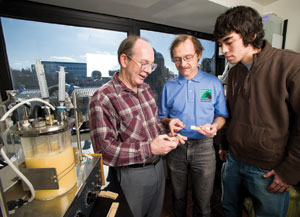
Breaking Down Walls
By Erin K. Peabody
Basic research on plant cell walls promises to boost not only dairy efficiency, but biofuels production as well. USDA Agricultural Research Service scientists may be on the edge of a breakthrough.






